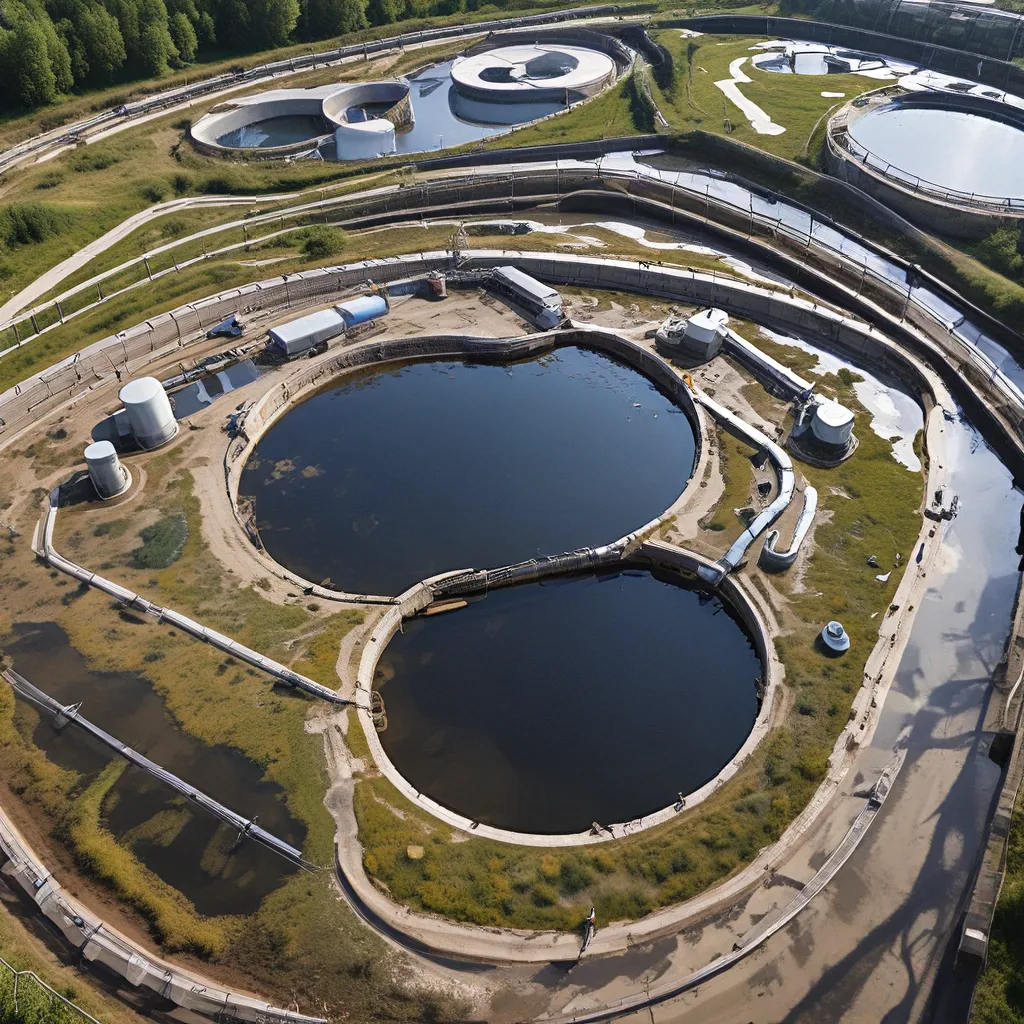
The world of wastewater treatment is a fascinating realm, where nature and technology intertwine in a delicate dance. As an engineer passionate about environmental sustainability, I’ve always been captivated by the power of microbiomes – those intricate communities of microorganisms that hold the key to unlocking innovative solutions.
Recently, I stumbled upon some groundbreaking research that’s shaking up the wastewater industry. It all started when I learned about this amazing bacterium called Cloacibacterium sp. CB-01. This little microbe has the remarkable ability to reduce nitrous oxide (N2O) emissions – a potent greenhouse gas that’s a major byproduct of wastewater treatment.
Now, you might be thinking, “Nitrous oxide? Isn’t that the stuff they use in whipped cream canisters?” Well, yes, that’s one use of N2O, but it’s also a significant contributor to global warming, with an impact on the climate that’s nearly 300 times stronger than carbon dioxide. And the wastewater industry is a major culprit, responsible for a substantial portion of anthropogenic N2O emissions.
But Cloacibacterium sp. CB-01 could be the solution we’ve been searching for. This unassuming bacterium has the unique ability to convert N2O into harmless nitrogen gas, essentially acting as a natural N2O “sink” in the wastewater treatment process. And the best part? It can be cultivated and added to wastewater systems, helping to dramatically reduce their environmental footprint.
Unlocking the Potential of the Microbiome
To really understand the significance of Cloacibacterium sp. CB-01, we need to delve a bit deeper into the world of wastewater treatment and the role of microbiomes. You see, these microscopic communities of bacteria, archaea, and fungi are the true heroes of the wastewater treatment process.
Think of them as a bustling city, with each microorganism playing a vital role in breaking down organic matter, removing nutrients, and even eliminating pathogens. It’s a complex and delicately balanced ecosystem, and when everything is working in harmony, the results can be truly impressive.
But the challenge lies in maintaining that balance, especially when it comes to the production of N2O. You see, certain microbes in the wastewater microbiome are responsible for the creation of this greenhouse gas, while others, like Cloacibacterium sp. CB-01, have the ability to consume it. It’s a constant tug-of-war, and the key is finding ways to tip the scales in favor of the N2O-reducing players.
Alpha Wastewater is at the forefront of this battle, leveraging the power of the microbiome to develop innovative solutions for wastewater treatment. By understanding the intricate interactions within these microbial communities, they’re able to engineer environments that promote the growth and activity of N2O-consuming bacteria, like Cloacibacterium sp. CB-01.
A Breakthrough in N2O Reduction
The story of Cloacibacterium sp. CB-01 is truly remarkable. Researchers have discovered that this unassuming bacterium is a superstar when it comes to reducing N2O emissions. Through a series of ingenious experiments, they’ve been able to unlock the secrets of this microbial marvel.
First, they found that CB-01 has a unique enzyme called N2O reductase, which allows it to efficiently convert N2O into harmless nitrogen gas. But what really sets this bacterium apart is its ability to thrive in the nutrient-rich environments of wastewater treatment plants.
Secondly, the researchers developed a clever technique to cultivate CB-01 in large quantities, using organic waste as a substrate and vector. This means they can inoculate wastewater systems with these N2O-reducing bacteria, essentially supercharging the microbiome to tackle the greenhouse gas problem.
And the results have been nothing short of astounding. In field experiments, soils treated with digestate containing live CB-01 cells showed a staggering 95% reduction in N2O emissions compared to control soils. Even more impressive, this effect was sustained over an extended period, demonstrating the remarkable tenacity and resilience of this microbial powerhouse.
But the potential of Cloacibacterium sp. CB-01 doesn’t stop there. The researchers have also discovered that this bacterium is a versatile player, able to thrive in a variety of soil types and environments. This means that the technology can be scaled up and applied across a wide range of wastewater treatment facilities, from small rural plants to large-scale urban systems.
A Sustainable Future Powered by the Microbiome
As I’ve delved deeper into this research, I can’t help but feel a sense of excitement and optimism. The discovery of Cloacibacterium sp. CB-01 and its ability to transform the wastewater industry’s environmental impact is nothing short of revolutionary.
Imagine a world where wastewater treatment plants are no longer contributing significantly to climate change, but instead are actively mitigating greenhouse gas emissions. A world where we can harness the power of nature to create a more sustainable future. This is the promise that Cloacibacterium sp. CB-01 holds.
But the story doesn’t end there. The researchers behind this groundbreaking work are continuously exploring new frontiers, looking for ways to further enhance the capabilities of N2O-reducing bacteria. They’re studying the intricate dynamics of the wastewater microbiome, searching for ways to foster the growth and activity of these microbial heroes.
And it’s not just about N2O reduction either. The wastewater microbiome holds the potential to tackle a wide range of environmental challenges, from nutrient removal to pathogen elimination. By unlocking the secrets of these microbial communities, we can revolutionize the way we treat our wastewater, creating a cleaner, greener, and more sustainable future for all.
So, the next time you flush the toilet or turn on the tap, remember the incredible power of the microbiome and the Cloacibacterium sp. CB-01 that could be silently working to protect our planet. It’s a testament to the wonders of nature and the endless possibilities that lie within the microscopic world around us.